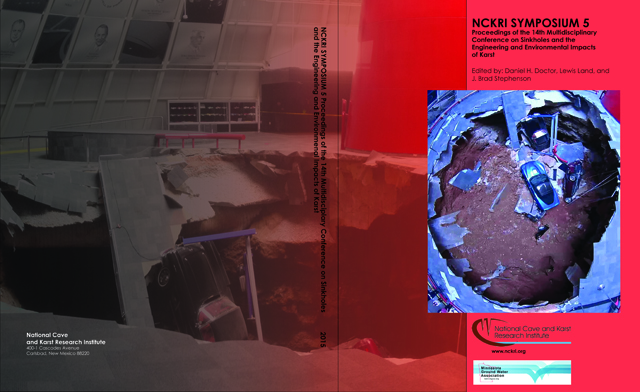Abstract
Pilot studies involving the use of passive seismic techniques in a range of geological settings and applications (e.g., mapping bedrock, studies of soil erosion and Quaternary surficial mapping) have shown that it is a versatile, non-invasive and economic technique. This paper presents the findings of three case studies that used passive seismic techniques for the detection and characterization of buried hollows in carbonate rocks: 1) a buried hollow in the Cretaceous chalk at Ashford Hill in the Kennet Valley, a tributary of the River Thames, UK; 2) buried karst in the foundation excavations for wind turbines in Carboniferous limestone at Brassington, Wirksworth, Derbyshire, UK; 3) defining the extent of solution hollows that host terrestrial Mio-Pliocene deposits, near Friden, Newhaven, Derbyshire, UK. Whilst case studies 2) and 3) are focused on areas of buried dolines, the geological context of the Ashford Hill site is more complex, including a deformation hollow with an uplifted “pinnacle” of chalk bedrock at the centre. The data were collected using Tromino®, a three-component, broadband seismometer, to measure background ambient noise (microtremors induced by wind, ocean waves, industrial machinery, road and rail traffic etc.). The Tromino is a small, portable device with an operating range of 0.1 Hz to 30 kHz and interpreted using proprietary software (Grilla), which subjects the data to Fourier transformation and smoothing. Where possible, “shear wave velocities” have been calibrated using borehole data or parallel geophysical techniques. In each case, the karst features were defined by Nakamura’s horizontal to vertical (H/V) spectral ratio technique, where microtremors are converted to show impedance contrasts (velocity x density), or a pseudo-layered seismic stratigraphy of the near surface along each profile. An additional benefit of the use of this technique is its depth of penetration and potential for defining the structural and lithological context of the hollows, thereby contributing to the process understanding associated with their formation. To this end the technique has helped define the structural discontinuities (fault, joint or bedding) that guide formation of the hollows.
DOI
http://dx.doi.org/10.5038/9780991000951.1034
The Application of Passive Seismic Techniques to the Detection of Buried Hollows
Pilot studies involving the use of passive seismic techniques in a range of geological settings and applications (e.g., mapping bedrock, studies of soil erosion and Quaternary surficial mapping) have shown that it is a versatile, non-invasive and economic technique. This paper presents the findings of three case studies that used passive seismic techniques for the detection and characterization of buried hollows in carbonate rocks: 1) a buried hollow in the Cretaceous chalk at Ashford Hill in the Kennet Valley, a tributary of the River Thames, UK; 2) buried karst in the foundation excavations for wind turbines in Carboniferous limestone at Brassington, Wirksworth, Derbyshire, UK; 3) defining the extent of solution hollows that host terrestrial Mio-Pliocene deposits, near Friden, Newhaven, Derbyshire, UK. Whilst case studies 2) and 3) are focused on areas of buried dolines, the geological context of the Ashford Hill site is more complex, including a deformation hollow with an uplifted “pinnacle” of chalk bedrock at the centre. The data were collected using Tromino®, a three-component, broadband seismometer, to measure background ambient noise (microtremors induced by wind, ocean waves, industrial machinery, road and rail traffic etc.). The Tromino is a small, portable device with an operating range of 0.1 Hz to 30 kHz and interpreted using proprietary software (Grilla), which subjects the data to Fourier transformation and smoothing. Where possible, “shear wave velocities” have been calibrated using borehole data or parallel geophysical techniques. In each case, the karst features were defined by Nakamura’s horizontal to vertical (H/V) spectral ratio technique, where microtremors are converted to show impedance contrasts (velocity x density), or a pseudo-layered seismic stratigraphy of the near surface along each profile. An additional benefit of the use of this technique is its depth of penetration and potential for defining the structural and lithological context of the hollows, thereby contributing to the process understanding associated with their formation. To this end the technique has helped define the structural discontinuities (fault, joint or bedding) that guide formation of the hollows.

